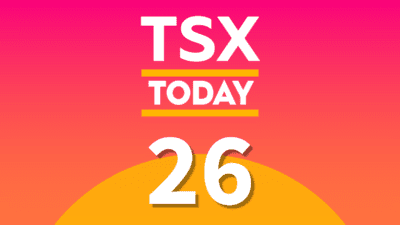Canada’s telecoms are well known for being great investment options. Two of those telecoms that have attracted a significant amount of attention of late are Rogers Communications Inc. (TSX:RCI.B)(NYSE:RCI) and Shaw Communications Inc. (TSX:SJR.B)(NYSE:SJR).
Both telecoms offer phone, internet, and cable TV subscription services. Both offer impressive coverage footprints and have intriguing plans for future growth.
But which of these two telecoms is a better investment? Let’s look at what each can offer.
The case for Rogers
Rogers is the second largest telecom in the country, with an impressive network that provides coast-to-coast coverage for wireless customers, as well as internet and cable TV subscription services. Rogers also has an impressive portfolio of media holdings, ranging from radio and TV stations, and even owns professional sports teams.
Rogers recently provided a quarterly update that was in a word, impressive. Analysts were expecting Rogers to add 34,000 additional customers in the quarter but were pleasantly surprised when Rogers announced 60,000 new postpaid subscribers. That increase was part of the reason Rogers posted net income of $294 million for the quarter, a marked increase over the $230 million posted in the same quarter last year.
In terms of a dividend, Rogers offers investors a quarterly dividend of $0.48 per share, which translates into a respectable 3.07% yield. As impressive as that yield is, that’s not the reason that I would invest in Rogers.
Growth is what excites me about Rogers. The company is embarking on several initiatives, including the adoption of the X1 platform from Comcast for video, and bringing a focus in one getting subscriber churn down (which is the number of subscribers that drop Rogers for a competitor in a quarter). A third focus, which is boosting the wireless segment’s revenue, was apparent in the most recent quarterly reports.
The case for Shaw
Shaw is the fourth largest player in the telecom market, falling behind Rogers in terms of coverage and services offered. Up until recently, Shaw lacked a wireless segment to counter Rogers and other telecoms, but the acquisition of Wind Mobile and subsequent rebranding as Freedom Mobile is both encouraging and just what the market needed.
To help finance the Wind deal, and to get the funds needed to upgrade the wireless network it just inherited, Shaw sold off the media arm of the company in a multi-billion-dollar deal. This is another area where Shaw differs from Rogers, but the media sale has arguably only made Shaw into a stronger, pure play competitor that is ready (or will be, once the new network is rolled out) to challenge Rogers’ supremacy in the wireless market, and this is a key advantage Shaw has over its rivals.
Wind was often viewed as a true alternative to the other carriers, often referred together in an unflattering name “RoBelUs”. Wind on the other hand had a reputation as being a lower cost true alternative to the other carriers, with the reputation with customers to match. Shaw is hoping to keep that same reputation going with Freedom mobile but is likely still over a year out on expanding Shaw’s coverage to come close to matching Rogers.
In terms of results, Shaw recent quarterly update reflected the consumer division’s best quarterly subscriber performance in five years. Revenue from continuing operations came in at $1.3 billion, reflecting a 13.3% increase over the same quarter last year. Operating income before restructuring costs and amortization improved by 7.6% over the same quarter last year, coming in at $540 million.
Shaw added 33,000 subscribers in the most recent quarter to the wireless prepaid and postpaid segment, compared to just 10,000 subscribers added in the previous quarter.
Shaw offers investors a $0.9875 per share monthly dividend, which provides an appetizing 4.15% yield.
Which is the better investment?
Both Rogers and Shaw are great investments, but both cater to different strengths and strategies. Rogers has made terrific strides in improving the number of subscribers in the wireless segment, but still needs to work on churn. Shaw, on the other hand, needs to continue working on expanding coverage to counter Rogers.
In my opinion, the better investment of the two is Shaw. Apart from the monthly dividend and higher yield, both of which are impressive, Shaw’s gamble on the mobile market is likely to yield a significant boost to revenues within the next few years.
Additionally, while both companies are a little on the expensive side, Shaw’s P/E of 32.46 makes the company less expensive than Rogers’ 36.68.







